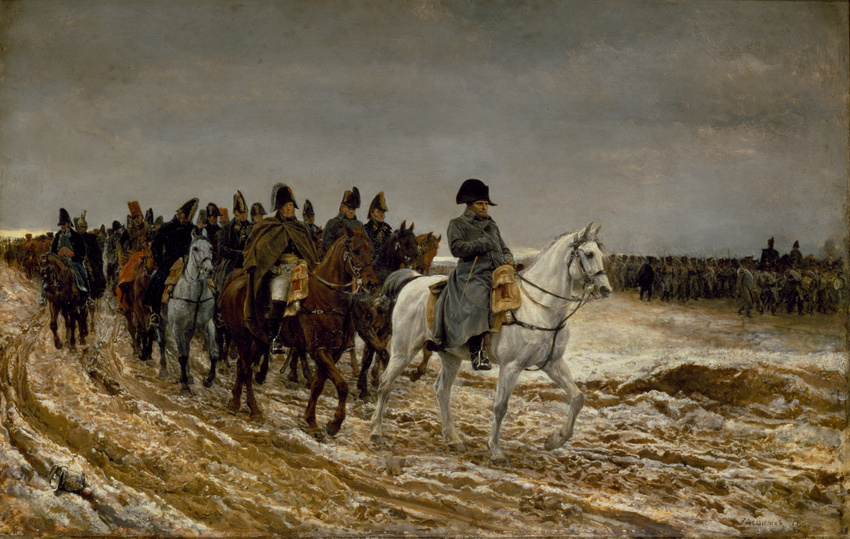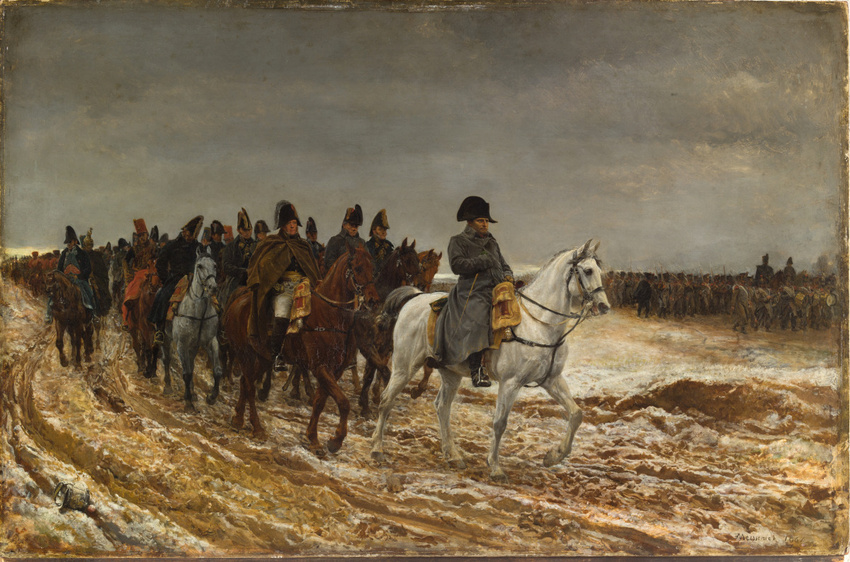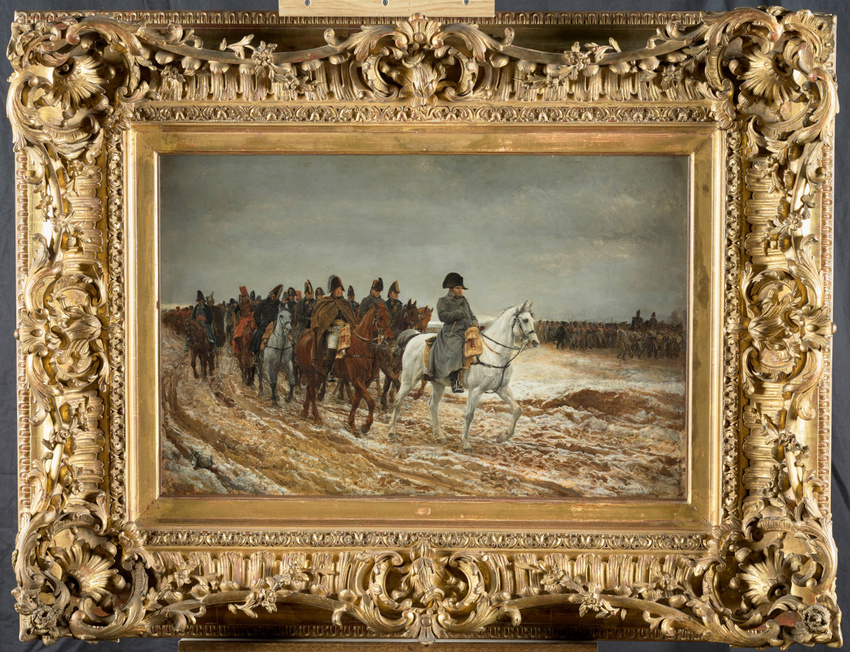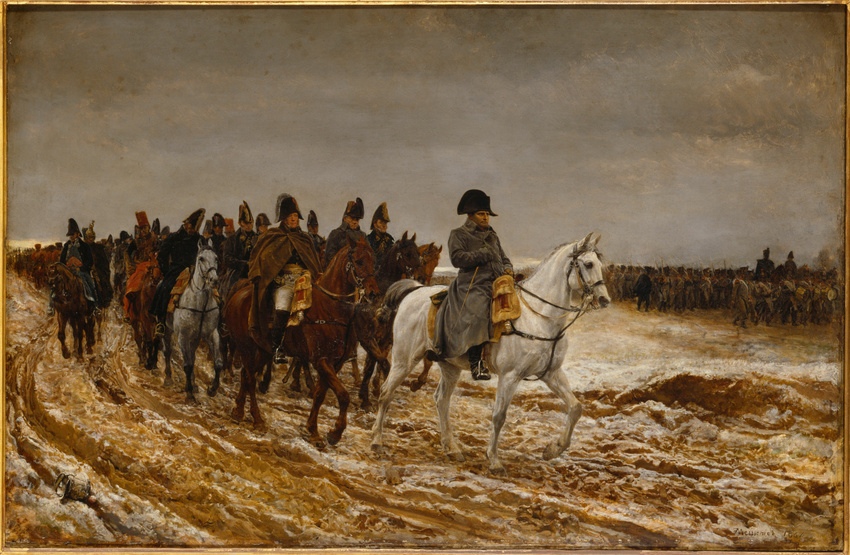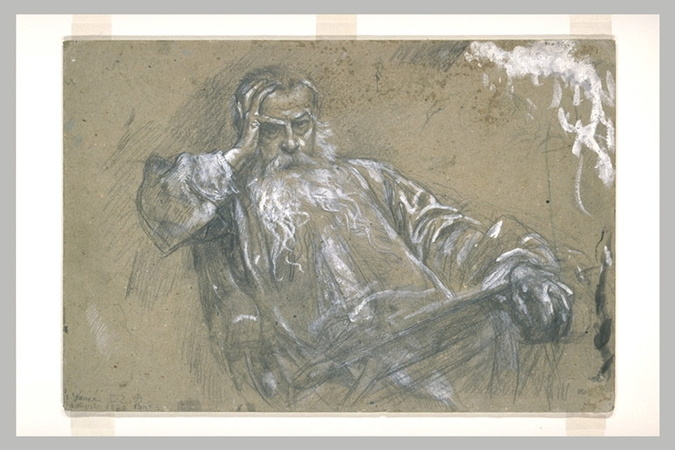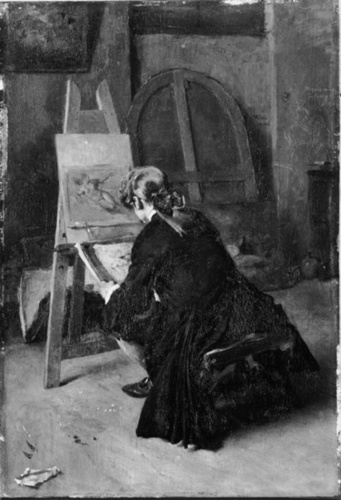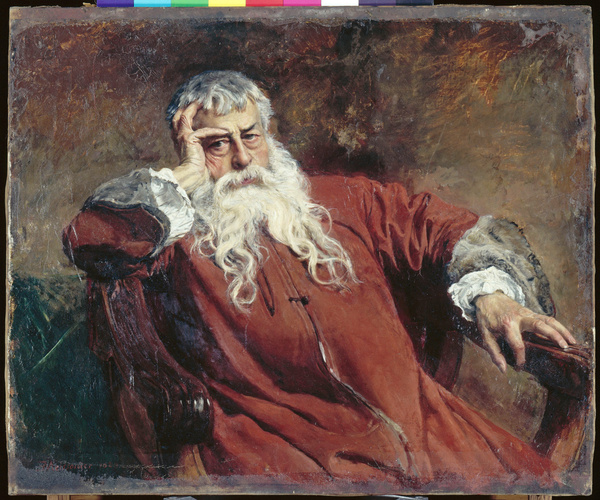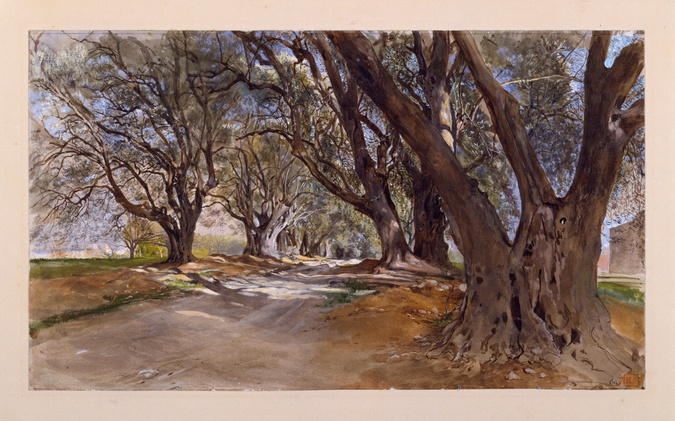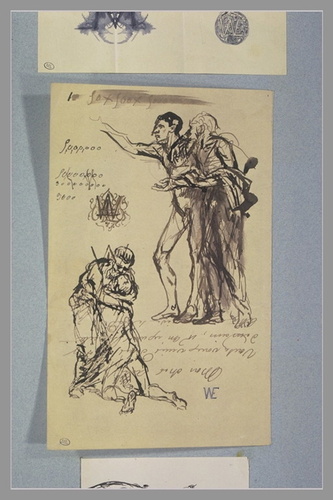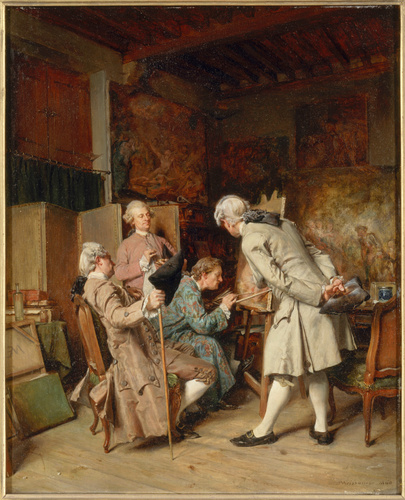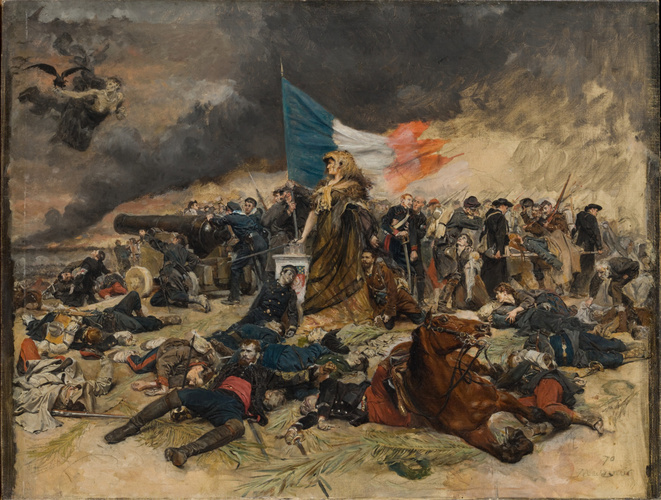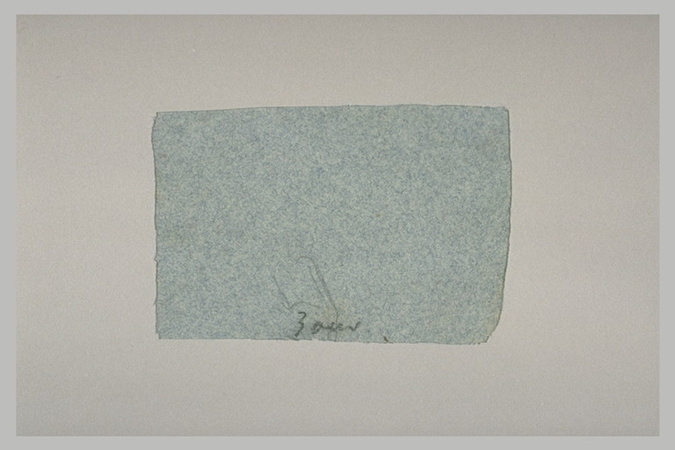Campagne de France, 1814
This painting—in a small format rather unusual for a painter of military history—indicates Meissonier's taste for seventeenth-century Flemish and Dutch painting and demonstrates his nimble, polished style. Despite its smallness, the vast expanse of desolate plain and leaden sky give breadth to the scene as does the dilated perspective around the central figure of the Emperor magnified by a slightly low angle.
The least details are minutely recorded: Napoleon's sprouting beard, the veins on the horse's legs, the snow dirtied by the marching troops... the Director of the Ecole des Beaux Arts, Charles Blanc, said that Meissonier "painted grandly in a small size". The artist applied the same meticulous approach, but as a historian this time, to his preparatory research: he collected abundant documentation, questioned many eyewitnesses and tried unsuccessfully to borrow the Emperor's grey coat.
Meissonier's approach was part of the historical realism movement which invaded painting and sculpture under the Second Empire. The episode he has chosen, although it occurred after several victories, announces forthcoming defeats. There is no action or event, just an atmosphere of loneliness and despondency. The doubts and resignation felt by the officers and the troops are palpable and are opposed to the determination that emanates from the isolated figure of Napoleon. These feelings are accentuated by the colour range: the whole scene uses brown and grey tones, subdued, deadened registers. The protagonists are not trampling virgin snow, but muddy ground.
Campaign of France, 1814 is in fact the first painting of an unfinished cycle of Napoleon's conquests, which brought Meissonier great acclaim.
